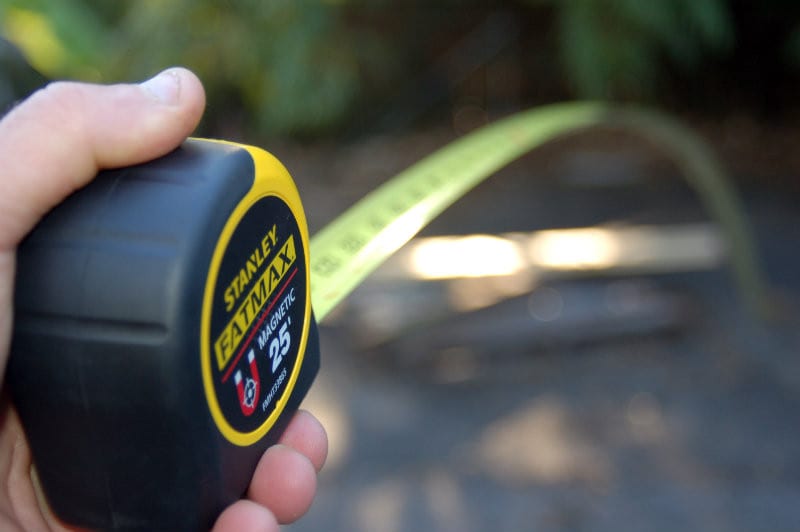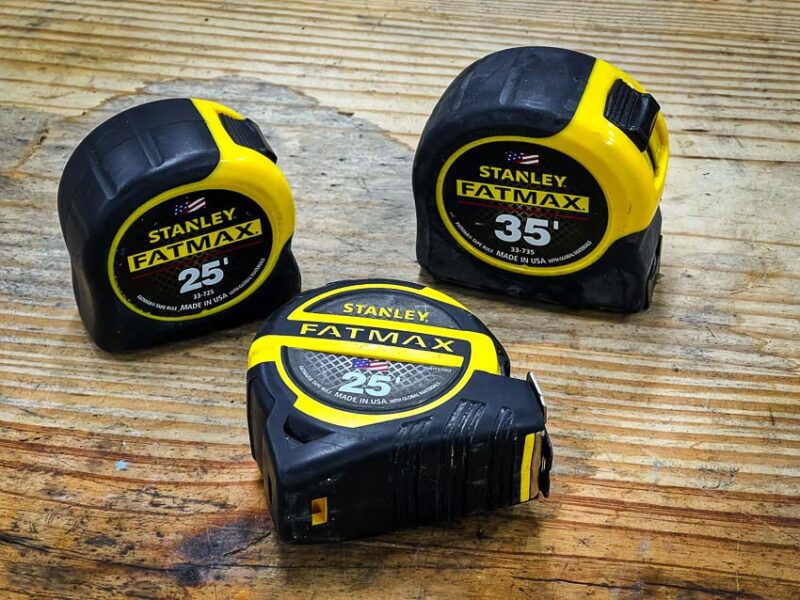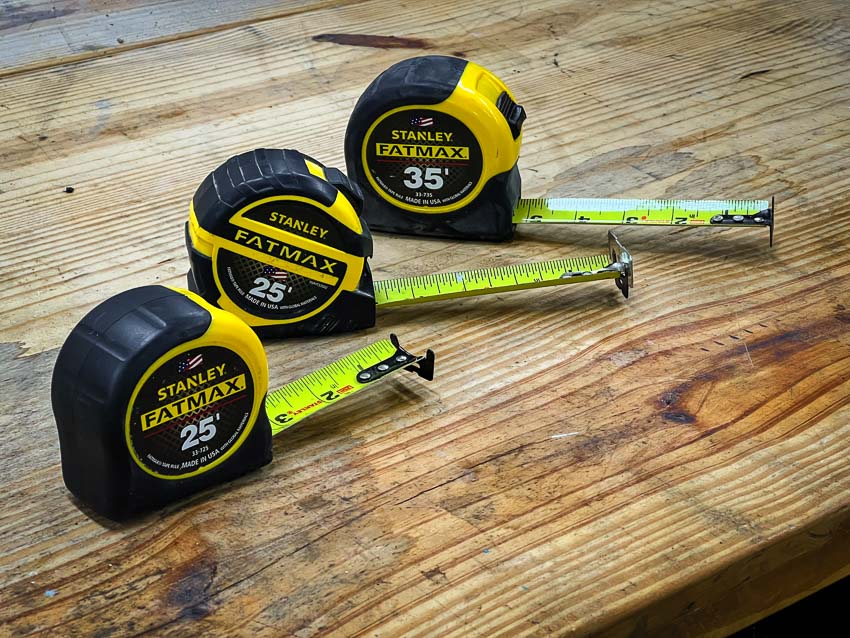In nearly any construction-related trade, one of the most universally used tools is the tape measure. The Stanley FatMax Tape Measure is among the most popular tool we see on the jobsite bar none. With an 11-foot unsupported stand out thanks to a wider and thicker blade, one person can measure what sometimes would require two people. The folks at Stanley also designed this tape measure to take real-world jobsite abuse.
Editor’s Note: Think you know everything about tapes? Check out our article on how to read a tape measure and we promise you’ll learn something new!
Stanley FatMax Tape Measure Features
Having used and reviewed the best tape measures, I’ve pretty much seen it all. Everything from battery-operated, motorized versions to simple inexpensive tapes. In my personal tool collection, however, I keep going back to my Stanley FatMax tape measures. My two favorite sizes are the 16-foot and my 25-foot tapes. The 16-foot model comes in handy for doing smaller projects like trim and building things in my shop. I use the larger, 25-foot model when building decks and framing homes or additions.
I picked up some new Stanley FatMax Tape Measures the other day to replace one that got concrete all over the blade. That’s what I get for lending my tools to a mason!
What is the Standout on the Stanley Fatmax Tape Measure?
The Stanley FaxMax tape measure has an 11-foot unsupported blade standout. That may be one of its best features.
A long standout matters—particularly when working alone. Using a tape measure like the Stanley Fatmax with a long standout means you can quickly and easily take measurements without someone needing to hold or place the “dumb” end of the tape.

Stanley Fatmax Tape Measure Features
Durable Blade Coating
Stanley coated the entire length of the blade with a Mylar polyester film which helps to protect the blade and helps it last longer. The first 5 inches or so of the blade, closest to the tip, has an extra cover. Stanley used to call this BladeArmor. This industrial thermoplastic layer covers the most-abused portion of the blade and strengthens this section to help reduce breakage. It works similarly to the Milwaukee Tool nylon blade coating on their tape measure line.
Blade Lock and Wide Body
The blade lock is a simple push-pull thumb switch that is a little tight to engage when the tape is new; but after some use, it really gets easier to operate. The outside shell of the tape is made of ABS plastic with at least 85% of the outside covered with black overmold rubber to give grip and also cushion the tape should you drop it on a hard surface – and you will.
One thing quickly jumps out to folks not familiar with the Stanley FatMax line of tapes. They are FAT! Since the blade is a full 1-1/4” wide, it makes the body of the tape measure wider. Should you have small hands, it might take a while to get used to the larger size. We are pretty sure though, that once you do get used to the size, you will never go back to your old tape measure.

Testing and Use
Testing the Stanley 33-725 FatMax 25-foot Tape Measure was easy. For one of my recent projects, I whipped it out to measure some studs for a wall framing project. FatMax tapes have been a part of my tool collection for a long time. I consider them old friends. We have seen some users gripe that the overall curvature of the extended blade is a little excessive. This holds especially true when compared to other 3/4″ and 1″ wide tapes.
The reason for the complaints is that when you need to make very accurate cuts, you need to twist the tape blade slightly. This lets the edge rest against the material being cut. With other narrower tapes, this is not quite as noticeable. With most, the blade lacks this extreme curvature.
Fat Max, Fat Body
Also, they are quick to point out how fat the tape measure body is too. But then they quickly realize the trade-offs that come with the fatter blade too. Like how the extra curvature actually makes the blade stiffer when it is extended out to its limits and how it is not floppy at all. What we found interesting is that even though the packaging claimed 11 feet; we actually got it out to nearly 12 feet with no support.
We suspect that after some break-in time this length will diminish some. The retracting spring is plenty powerful enough too, and if you are not careful, it will whip the metal tape in at a rather fast rate. The packaging suggests not letting the tape slam into the body to help extend the life of the tool. We found that the tip is easy to latch onto the end of most of the materials that we measured thanks to its shape.
Conclusion
All in all, the Stanley FatMax Tape Measure lineup still proves itself a staple of the jobsite. While not perfect, it combines some of the most important qualities that a tape measure needs. We like the long stand-out and extra stiffness of the blade. The simple blade lock and easy-to-read measurements also prove a consistent advantage. It tops our performance scales as a great rugged jobsite measuring tool.
About the only negative comes with the price. Unless you land a sale, the Stanley Fatmax tape measure typically comes at a premium cost vs the competition. Expect to pay between $17 and $35 depending on the model you choose.




